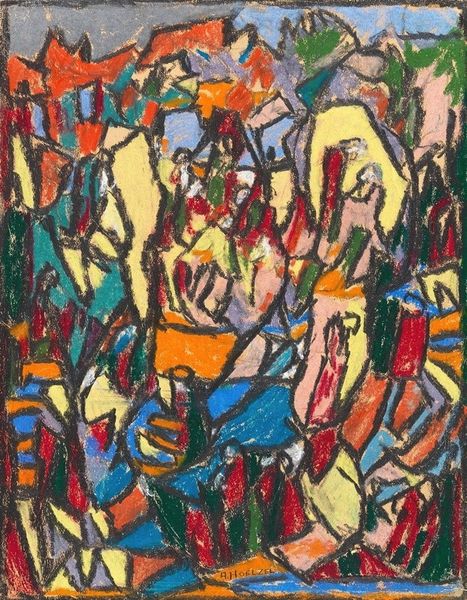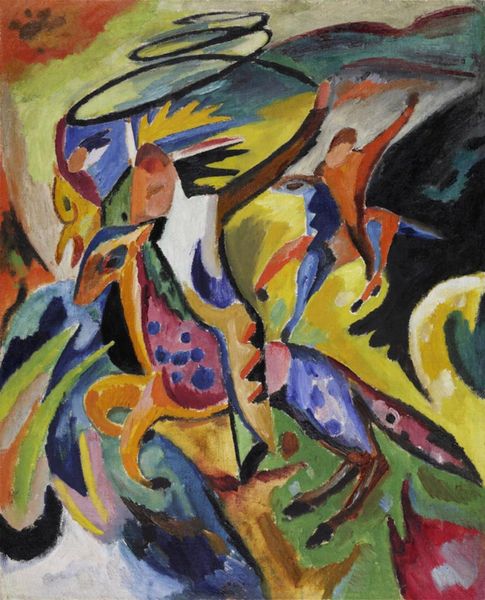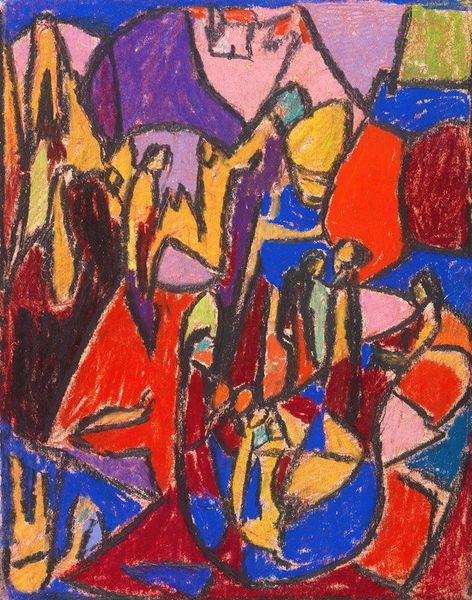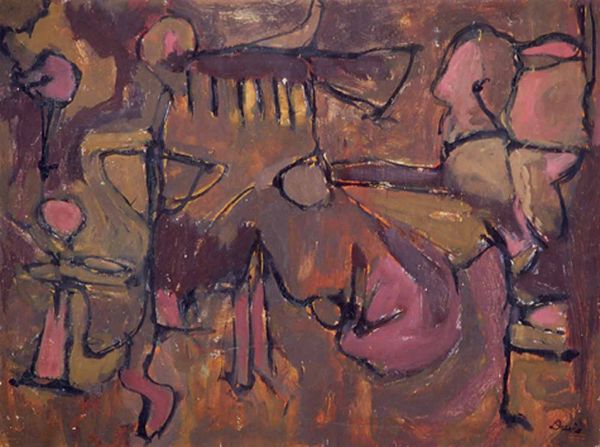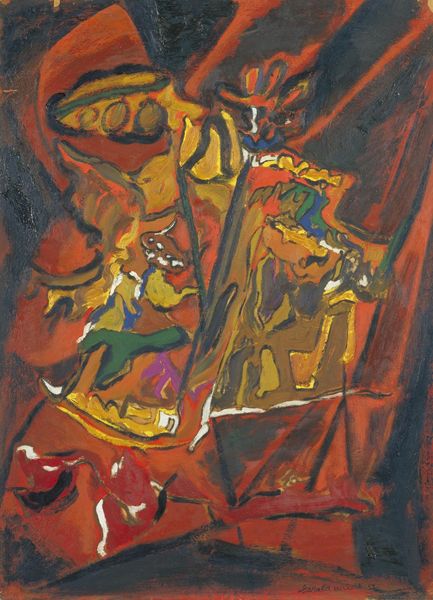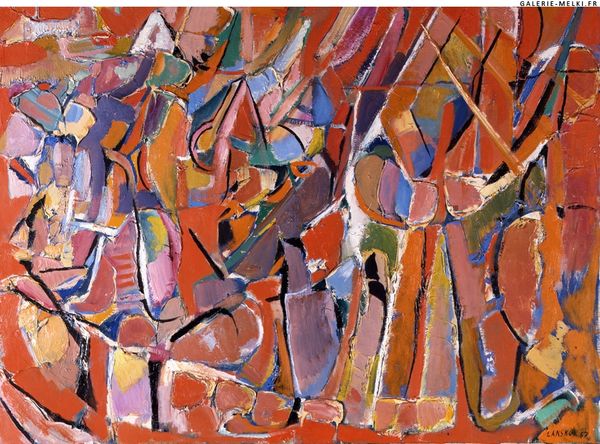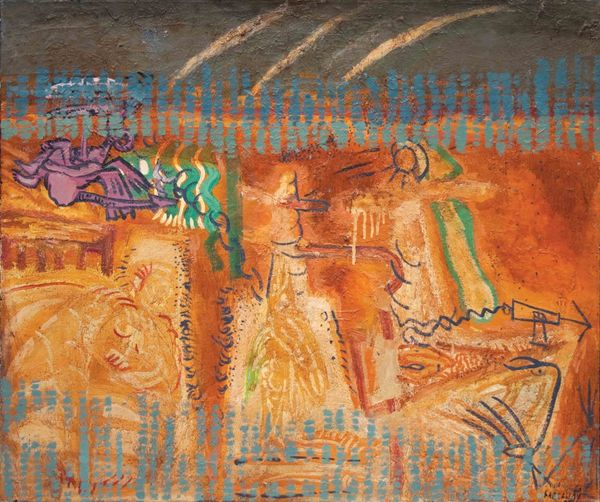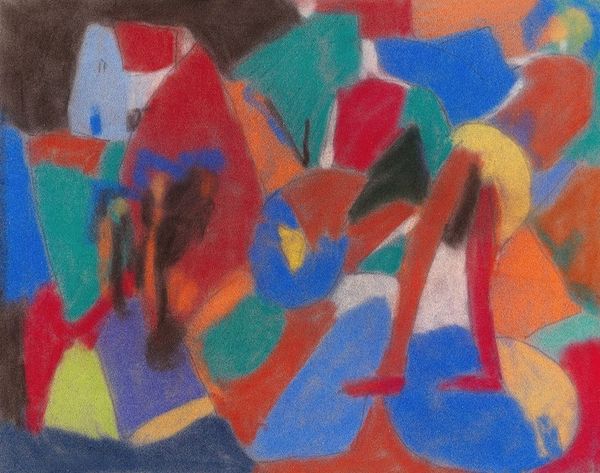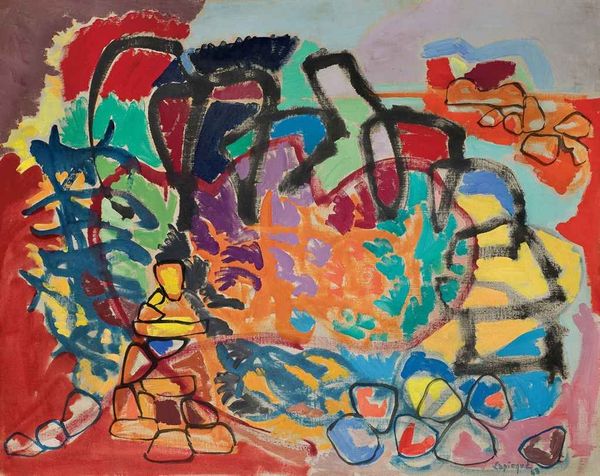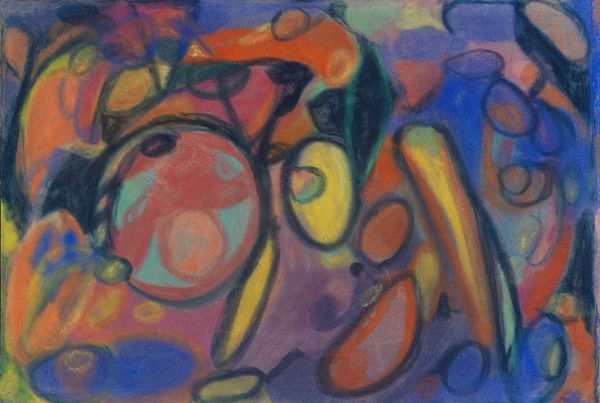
Copyright: Public Domain: Artvee
Curator: Right now we're standing in front of "Figurenkomposition," an intriguing piece rendered sometime between 1920 and 1930 by Adolf Hölzel. Editor: Wow, that's a colour bomb! It reminds me a little of children's building blocks, yet the palette has a peculiar mood to it, like cheerful angst, if that makes sense? Curator: Absolutely, and that's partly thanks to Hölzel’s background. While rooted in late 19th-century academic traditions, he embraced the Fauvist movement and experimented quite heavily with abstraction. His theoretical work regarding color and form directly influenced his practice as well as other artists like Oskar Schlemmer and Johannes Itten, whom you may remember as having a big role at the Bauhaus. Editor: Fauvist abstraction then? Now I'm recalling my own early fascinations with color theory as a young man... Tell me more about the individual geometric forms present. Curator: The artwork offers precisely that. There are overlapping shapes – triangles, rectangles, organic blobs – all fighting for space on what feels like a shallow stage. There is tension to find an organizing logic between all these competing components. Editor: That's so true. I keep returning to how those shapes intersect. See, the purple one sitting beside a deep yellow seems deliberate and the pink element towering near the center resembles a primal echo. Is it perhaps Hölzel referencing some lost, personal language through pure geometric form and expressive colors? Curator: Perhaps so. What makes it especially captivating is how his method creates a conversation, doesn't it? Each colour almost talks back to the others. Editor: Almost daring you to listen in. Thinking about these primal colors alongside pure geometrical shapes – aren't we really confronting the very building blocks of art itself? A vibrant game of chaos and cosmos within four sides? It almost hints at psychological forces lurking underneath conscious awareness! Curator: And perhaps art itself – the impulse towards image-making – carries the memory of such an encounter. Thanks to art’s memory, perhaps we feel it within ourselves?
Comments
No comments
Be the first to comment and join the conversation on the ultimate creative platform.

